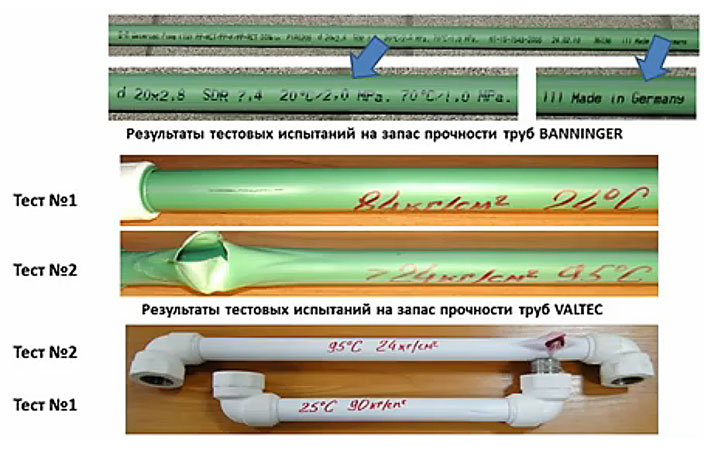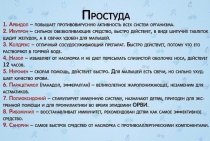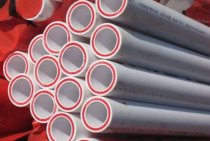Varieties of polypropylene pipes presented on the domestic market
Currently, pipes made of polypropylene in a wide range of colors are available for domestic consumers. The colors of polypropylene pipes are selected depending on the area of future operation.
The color of the pipe will tell about the features of its application.
White polypropylene pipes
When mounting water communications, it is recommended to use white pipes made of polypropylene. They are easy to weld, so installation is carried out in record time. Since at a temperature of 0 degrees polypropylene begins to change its structure (crystallizes), it is not recommended to use white pipes made of this material outdoors
Even the transportation of polypropylene pipes at such a temperature regime should be carried out with extreme caution, since any mechanical and physical impact can cause damage to them.
The white polypropylene pipe has a lot of advantages:
- maximum useful life;
- the ability to withstand pressure up to 25 bar;
- low cost;
- resistance to corrosive changes, etc.
White polypropylene pipes
The white pp pipe cannot be used for the installation of outdoor communication systems that will be operated in adverse climatic conditions, at low temperature conditions. This should be taken into account when drafting future communications.
Gray polypropylene pipes
Gray polypropylene pipes are often used when installing plumbing, and are also suitable for creating both centralized and individual heating systems. They have excellent technical properties:
- thermal stability;
- chemical resistance;
- long operational period;
- environmental friendliness;
-
tightness, etc.
Black polypropylene pipes
When creating sewer communications, as well as drainage systems, it is recommended to use black polypropylene pipes. In their manufacture, special additives are used that improve their technical capabilities. Black polypropylene pipes have the following advantages:
- resistance to ultraviolet radiation;
- resistance to various aggressive environments;
- resistance to drying out;
-
high strength, etc.
Green polypropylene pipes
When mounting irrigation systems in household plots, green polypropylene pipes are most often used, since they are not too resistant to internal pressure exerted by water.
Such pipes are sold in a fairly low price range, so land owners do not pay too much attention to their strength characteristics. Recently, some manufacturers have begun to pay more attention to the technical characteristics of pipes made of green polypropylene, so that on the domestic market you can buy such material suitable for mounting cold plumbing in residential premises.
Green polypropylene pipes
Green polypropylene pipes do not tolerate any physical impact, including pressure
It is important to regularly monitor the status of the created communication, as there is a high risk of pipe breakage.
Based on the test results, the following table was compiled
| Trademark | Pipe diameter x-Wall thickness, SDR (in fact) |
PN - declared on the pipe | Pipe marking | Reinforcement according to the designation on the pipe | Burst pressure at 20ºС, bar |
|---|---|---|---|---|---|
| VALTEC | 20.63×3.44 SDR6 | PN20 | VALTEC PP-R | No | 120 |
| HEISSKRAFT | 32.16x 4.8 SDR 6.7 | PN20 | HEISSKRAFT PPR | No | 110 |
| VALFEX | 20.27x3.74 SDR 5.4 | PN20 | VALFEX PPR100 | No | 110 |
| TEVO | 20x3.5 SDR 6 | PN20 | PP-R/PP-R-GF/PP-R SDR6 | Fiberglass | 120 |
| TEVO | 25.21×3.44 SDR 7.3 | PP-R/PP-R-GF/PP-R SDR7.4 | Fiberglass | 90 | |
| VALTEC | 20.15×2.97 SDR 6.8 | PN20 | PP-FIBER PP-R100 | Fiberglass | 95 |
| VALTEC | 25.7×3.57 SDR 7.2 | PN20 | PP-FIBER PPR100 | Fiberglass | 85 |
| SANPOLIMER | 20.54×2.3 SDR 8.9 | PN20 | SANPOLIMER PP GLASS FIBER SDR 7.4 | Fiberglass | 80 |
| HEISSKRAFT | 20.15×3.0 SDR 6.71 | PN20 | PPR-GF-PPR 20×2.8 | Fiberglass | 110 |
| HEISSKRAFT | 20.13x2.85 SDR 7.1 | PN20 | HEISSKRAFT PPR-GF-PPR SDR7,4 | Fiberglass | 100 |
| EGEPLAST | 25.48x4.51 SDR 5.6 | PN20 | EGEPLAST GF | Fiberglass | 130 |
| SANPOLIMER | 20×3.15 SDR 6.3 | PN20 | SANPOLIMER PP GlassFiber SDR6 | Fiberglass | 100 |
| WAVIN EKOPLASTIK | 25.45x4.05 SDR 6.3 | WAVIN EKOPLASTIK FIBER BASALT PLUS PP-RCT/PPRCT+BF/PP-RCT | Basalt fiber | 80 | |
| SANPOLIMER | 25.6x3.8 SDR 6.7 | PN20 | SANPOLIMER PP Al-Inside | Al central reinforcement | 110 |
| COMFORT SUPER | 20.48×3.55 SDR5.7 | PN20 | COMFORT SUPER PPR-AL-PPR | Al central reinforcement | 120 |
| Master Pipe | 20×4.22 SDR 4.7 | PN20 | Master Pipe PPR-AL-PPR | Al central reinforcement | 140 |
| DESIGN | 25.7 (longitudinal ribs, wall thickness variable) | PN32 | DIZAYN HI-TECH OXY PLUS combi | Al central reinforcement | 140 |
First of all, it should be noted that the data obtained do not contradict the data of manufacturers and suppliers of products. For example, specialists from Vesta Trading, in one of their training videos, clearly indicate the maximum pressure that the pipe samples they tested withstood, as can be seen from the following figure:
Note also that we did not choose a pipe with a special wall thickness - see the values indicated in the second column.
Pay attention to the burst pressure values of the glass fiber reinforced pipe. The difference in burst pressures between PPR100 and PPR80 should be approximately 20%
From the table it can be seen that the PPR80 pipe withstands the same burst pressure as the pipe made from PPR100 for equal SDRs, and the pressures are almost the same. Where the SDR of the pipe is 6, the burst pressure is 120 atm.; where SDR = 7.4, pressure = 90–95 atm. The SANPOLIMER pipe has a thicker wall (actual SDR = 6.35), so it has a slightly higher burst pressure: 100 atm.
Note that for an unreinforced VALTEC pipe with a normal wall thickness and made of PPR100 (20 × 3.44), the burst pressure is also 120 atm. The conclusion is obvious: these pipes are made from the same raw material - this is PPR80. On the other hand, the HEISSKRAFT pipe with SDR = 6.7 has a burst pressure of 110 atm, so it may be made from PPR100 raw materials.
So, all pipes, except for HEISSKRAFT pipes, are made of PPR80 and correspond to the nominal value PN16 at SDR = 7.4, PN20 at SDR = 6.
Having carried out the same analysis of pipes with central reinforcement, we come to a similar conclusion. They are all made from PPR80 and are classified as PN20 - even those labeled or advertised as PN32. For pipes with central reinforcement, as for others, there are other types of tests. Critical for pipes with aluminum reinforcement will be tests for 1000 hours at a temperature of 95 ° C, and not the short-term tests described in this article. Therefore, based on long-term tests, all pipes with SDR = 6 with central reinforcement are PN20 pipes. The service life of PN16 and PN20 differs quite significantly: for example, at a coolant pressure of 8 atm. it is equal to 11 years and 38 years, respectively.
Advantages and disadvantages of polypropylene pipes
Unlike metal, polypropylene is not subject to corrosive changes, which significantly increases their service life. Affordability and ease of installation also testify in favor of polypropylene pipes. Superiority over similar materials, pipes were achieved due to the unique performance characteristics.
The main disadvantages of polypropylene pipes:
- low resistance to mechanical stress;
- intolerance to ultraviolet rays (except for black pipes);
- impossible operation in outdoor conditions at low temperature conditions (except for black pipes).


